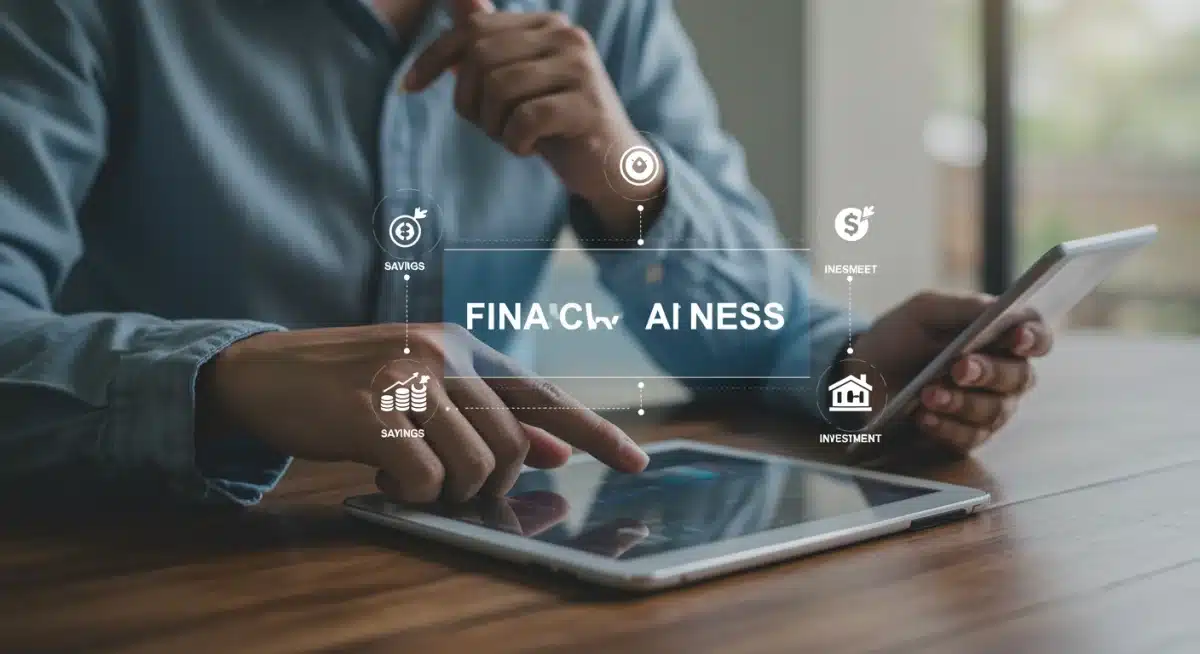Voluntary Benefits Trends 2025: Employee Choices & Why

In 2025, employees are increasingly choosing voluntary benefits that offer personalized support for financial stability, mental well-being, and work-life integration, reflecting a shift towards holistic and adaptable workplace offerings.
As the employment landscape continues its dynamic evolution, understanding
voluntary benefits trends for 2025 becomes paramount for employers aiming to attract, retain, and engage top talent.
Employees are no longer satisfied with a one-size-fits-all approach; instead, they seek personalized options that genuinely support their diverse needs and life stages.
This shift demands a proactive and empathetic approach from organizations, moving beyond traditional offerings to embrace a more comprehensive view of employee well-being.
The Rising Demand for Personalized Benefits
The concept of a standardized benefits package is rapidly becoming a relic of the past.
Today’s workforce is incredibly diverse, encompassing multiple generations, varied family structures, and a wide spectrum of personal priorities.
This inherent diversity fuels a strong demand for voluntary benefits that can be customized to individual circumstances, allowing employees to select what truly matters to them at different points in their lives.
Employers are recognizing that a tailored approach to benefits not only enhances employee satisfaction but also demonstrates a genuine commitment to their workforce’s overall well-being.
This personalization fosters a sense of being valued, which in turn can significantly boost morale and loyalty.
Understanding the Generational Divide in Preferences
- Gen Z and Millennials: Often prioritize benefits related to financial wellness, student loan assistance, and mental health support, reflecting their unique economic challenges and heightened awareness of well-being.
- Gen X: Tend to focus on benefits that support family care, such as elder care programs or expanded dependent care options, alongside robust retirement planning tools.
- Baby Boomers: While a smaller segment of the workforce, they often seek comprehensive healthcare, long-term care insurance, and flexible retirement pathways.
By offering a broad spectrum of voluntary benefits, companies can cater to these distinct preferences, ensuring that their benefits package remains competitive and relevant across all employee demographics.
This strategic alignment with employee needs is crucial for creating a truly inclusive and supportive work environment.
In essence, the move towards personalized benefits is not just a trend but a fundamental shift in how organizations view their role in supporting employee lives.
It’s about empowerment, choice, and recognizing that a happy, healthy employee is a productive employee.
Financial Wellness: Beyond the Paycheck
For many employees, financial stress remains a significant burden, impacting productivity and overall well-being.
In 2025, voluntary benefits aimed at enhancing financial wellness are no longer considered a luxury but a necessity.
These benefits go far beyond traditional retirement plans, offering practical tools and resources to help employees manage their money effectively in the present and plan confidently for the future.
The focus is on providing tangible support that addresses various aspects of financial health, from budgeting and debt reduction to emergency savings and investment education.
Employers understand that alleviating financial strain can lead to a more focused and engaged workforce.
Key Offerings in Financial Wellness
- Student Loan Repayment Assistance: A highly sought-after benefit, particularly by younger generations, helping to reduce the burden of educational debt.
- Emergency Savings Programs: Facilitating automated savings contributions, often with employer matching, to build critical financial safety nets.
- Financial Planning and Counseling: Access to certified financial advisors for personalized guidance on budgeting, debt management, and investment strategies.
- Identity Theft Protection: A growing concern, this benefit offers peace of mind by protecting employees from financial fraud and identity theft.

These programs are designed to empower employees with the knowledge and resources to take control of their financial futures.
The impact extends beyond individual employees, contributing to a more stable and resilient workforce overall.
Companies that invest in financial wellness benefits are demonstrating a deep understanding of their employees’ real-world challenges.
Ultimately, robust financial wellness programs are becoming a cornerstone of competitive voluntary benefits packages.
They represent a proactive step by employers to support their workforce in a meaningful way, fostering both financial security and peace of mind.
The Prioritization of Mental Health and Emotional Well-being
The past few years have brought mental health to the forefront of workplace discussions, and in 2025, it remains a critical area for voluntary benefits.
Employees are actively seeking support for their emotional and psychological well-being, recognizing that mental health is as important as physical health.
Employers are responding by expanding access to a wider range of mental health resources, moving beyond basic Employee Assistance Programs (EAPs).
This trend reflects a broader societal shift towards destigmatizing mental health issues and encouraging open conversations.
Companies that offer comprehensive mental health benefits are seen as progressive and caring, enhancing their reputation as employers of choice.
Expanding Mental Health Support
- Telehealth for Mental Health: Easy access to virtual therapy and counseling sessions, removing geographical barriers and reducing wait times.
- Mindfulness and Stress Reduction Programs: Workshops, apps, and resources focused on meditation, resilience, and stress management techniques.
- Substance Abuse Support: Confidential resources and programs for employees and their families dealing with addiction.
- Caregiver Support for Mental Health: Specific resources designed to help employees juggling work with caregiving responsibilities, a known source of stress.
Providing diverse avenues for mental health support ensures that employees can find the help they need in a format that suits them best.
These benefits contribute to a healthier, more resilient workforce, capable of handling challenges both inside and outside of work.
By integrating robust mental health and emotional well-being benefits, organizations are not only fulfilling a moral imperative but also investing in the long-term health and productivity of their most valuable asset: their people.
Flexibility and Work-Life Integration Benefits
The traditional 9-to-5, in-office work model has been significantly challenged, leading to a profound re-evaluation of work-life balance.
In 2025, voluntary benefits that enhance flexibility and promote work-life integration are highly valued by employees.
These benefits acknowledge that employees have lives outside of work and seek greater autonomy over how and when they perform their duties.
Employers are finding that offering such flexibility can lead to increased job satisfaction, reduced burnout, and improved retention rates.
It’s about creating an environment where employees can thrive professionally without sacrificing their personal lives.
Innovations in Flexible Work Options
- Flexible Work Schedules: Options like compressed workweeks, flextime, or asynchronous work that allow employees to adjust their hours.
- Remote and Hybrid Work Stipends: Financial support for home office setups, internet expenses, or co-working space memberships.
- Paid Sabbaticals: Opportunities for extended periods of paid leave for personal growth, travel, or rest, rejuvenating employees and preventing burnout.
- Concierge Services: Benefits that help manage personal errands, such as dry cleaning, meal prep, or pet care, freeing up employee time.
These benefits are instrumental in creating a workplace culture that trusts and empowers employees.
When individuals feel they have control over their work environment and schedule, they are more likely to be engaged, productive, and committed to their organization.
The emphasis on flexibility and work-life integration is a clear indicator that the modern workforce prioritizes well-being and personal fulfillment alongside professional achievement.
Smart employers are adapting their voluntary benefits to reflect this fundamental shift.
Professional Development and Skill Enhancement
In an era of rapid technological advancement and evolving job markets, employees are keenly aware of the need to continuously update their skills.
Voluntary benefits related to professional development and skill enhancement are therefore highly attractive in 2025.
These benefits demonstrate an employer’s commitment to their employees’ long-term career growth, fostering loyalty and a highly skilled workforce.
Investing in employee development not only benefits the individual but also strengthens the organization as a whole, ensuring it remains competitive and innovative.
It signals that the company values continuous learning and internal mobility.
Valued Learning and Development Offerings
- Tuition Reimbursement and Continuing Education: Financial assistance for degrees, certifications, or professional courses directly relevant to an employee’s role or career path.
- Online Learning Platforms: Subscriptions to platforms offering a wide array of courses, from technical skills to leadership development.
- Mentorship and Coaching Programs: Structured programs that connect employees with experienced mentors or professional coaches to guide their development.
- Conference and Workshop Attendance: Funding for employees to attend industry conferences, seminars, and workshops to stay abreast of the latest trends and network with peers.
By providing opportunities for growth, employers are not just offering a benefit; they are making a strategic investment in their human capital.
Employees who feel their skills are being nurtured are more likely to be engaged, motivated, and less likely to seek opportunities elsewhere.
The focus on professional development underscores the mutual benefit of these voluntary offerings: employees gain valuable skills, and organizations cultivate a more capable and adaptable workforce.
The Role of Technology in Benefits Delivery
The effectiveness of any voluntary benefits package in 2025 is heavily reliant on how easily employees can access and understand their options.
Technology plays a pivotal role in streamlining benefits administration, communication, and utilization.
Sophisticated platforms and digital tools are becoming essential for managing the growing complexity of personalized benefit offerings.
Seamless digital experiences enhance employee engagement with their benefits, ensuring they can make informed choices and maximize the value of what’s available to them.
This technological integration is no longer a nice-to-have but a core component of a successful benefits strategy.
Advancements in Benefits Technology
- Personalized Benefits Portals: Intuitive online platforms that allow employees to easily browse, compare, and enroll in voluntary benefits tailored to their profiles.
- AI-Powered Benefits Advisors: Chatbots or virtual assistants that can answer common benefits questions, guide employees through enrollment, and provide personalized recommendations.
- Mobile Benefits Apps: Applications that offer on-the-go access to benefits information, claims submission, and wellness program tracking.
- Data Analytics for Benefits Optimization: Tools that help HR teams analyze benefits utilization data to identify trends, measure ROI, and refine offerings based on employee preferences.
The strategic use of technology transforms the benefits experience from a confusing administrative task into an empowering and user-friendly process.
This ease of access and understanding is crucial for maximizing employee participation and satisfaction with their voluntary benefits.
Ultimately, technology is the enabler that allows employers to deliver on the promise of personalized and comprehensive voluntary benefits, ensuring that these valuable offerings are not just available but also effectively utilized by the workforce.
| Key Trend | Description |
|---|---|
| Personalized Options | Employees demand customizable benefits to match diverse life stages and individual needs. |
| Financial Wellness | Beyond paychecks, support for debt, savings, and financial planning is crucial. |
| Mental Health Focus | Expanded access to therapy, mindfulness, and emotional well-being resources. |
| Work-Life Integration | Flexible schedules, remote work support, and sabbaticals are highly valued. |
Frequently Asked Questions About Voluntary Benefits
Voluntary benefits are optional offerings employees can purchase, often at a group rate, complementing core benefits. In 2025, they are crucial for attracting and retaining talent by allowing personalization, addressing diverse employee needs, and enhancing overall job satisfaction and well-being in a competitive market.
Financial wellness benefits significantly reduce employee stress related to money concerns. When employees feel more secure about their finances, they can focus better on their work, leading to increased productivity, improved engagement, and reduced absenteeism due to financial worries, fostering a more stable workforce.
Mental health support is a growing trend because employees increasingly recognize its importance for overall well-being and productivity. Employers are responding by offering more comprehensive resources, destigmatizing mental health issues, and creating a supportive environment, which ultimately leads to a healthier, more resilient workforce.
Technology is vital for efficient and accessible voluntary benefits delivery. It enables personalized benefits portals, AI-powered advisories, mobile apps, and data analytics. This streamlines administration, enhances communication, and allows employees to easily understand and utilize their benefits, maximizing engagement and satisfaction with offerings.
Employers can tailor benefits by conducting regular employee surveys, analyzing demographic data, and offering a broad, flexible menu of options. Categorizing benefits by life stage or generational preferences helps. Utilizing robust benefits administration platforms also aids in personalizing choices and ensuring relevance for a diverse workforce.
Conclusion
The landscape of voluntary benefits in 2025 is unequivocally shaped by employee demand for personalization, holistic well-being, and flexibility.
Organizations that proactively adapt to these evolving needs will be best positioned to attract and retain top talent.
From robust financial wellness programs and comprehensive mental health support to flexible work arrangements and continuous professional development, the most successful benefits strategies will be those that genuinely reflect an understanding of the modern employee’s life and aspirations.
Embracing these voluntary benefits trends is not just about staying competitive; it’s about building a resilient, engaged, and thriving workforce for the future.





